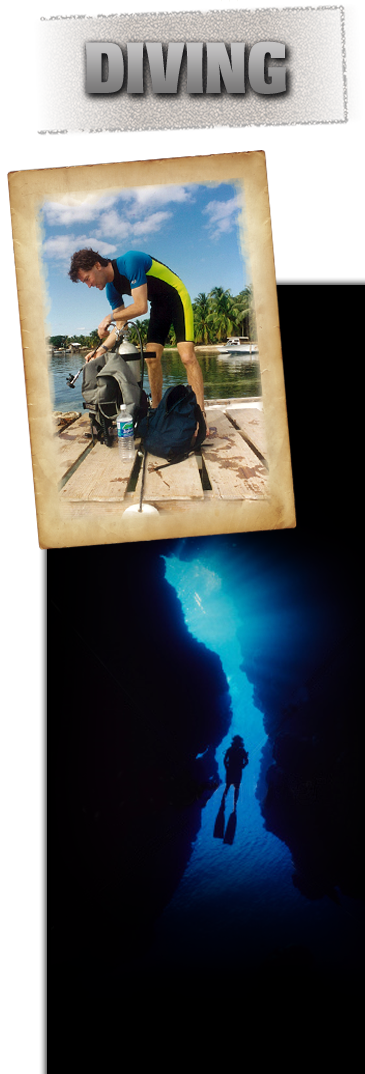
Other than Micronesia's Truk Lagoon, I have never traveled specifically for scuba diving. However, if I'm in a region where diving is possible, I'll try to make time for it. Here a few of the sites I've dived, and my unprofessional opinion of each!
Truk Lagoon, Micronesia
Unparalleled and spooky wreck diving.
During World War II, Truk Lagoon served as the forward anchorage for the Japanese Imperial Fleet. The lagoon was considered the most formidable of all Japanese strongholds in the Pacific.
Then, on February 17, 1944, Operation "Hailstone", an attack of American naval aircraft, sent 60 Japanese ships and 270 airplanes to the bottom.
Today, you can explore the cockpits of Japanese "Zero" fighters, see landing craft, swim through the mess halls, see unopened sake bottles and even skeletons. Many dives descend to over 120 feet, and it's not a place for dive amateurs, or the claustrophobic.
Myanmar, Mergui Archipelago
Were this archipelago's coral reef located anywhere else in the world, it would be hailed as one of the earth's great underwater ecosystems. Longer, cleaner and clearer than Australia's Great Barrier Reef and the great Planacar Reef in Central America, it winds for three-hundred miles along the east shore of the Andaman Sea.
The region was sealed off from the outside world for 50 years, and finally opened to "outsiders" in 1996. Other than the nomadic Moken "sea gypsies", the islands have remained unsettled and undeveloped throughout history. The fish and coral life remains as varied as fresh as the day it was created. Difficult to get to, but worth it.
West Papua, Raja Ampat Archipelago, Indonesia
Without a doubt, the best diving in the world. The archipelago lies 40 miles west of the island of Papua New Guinea, about 400 miles north of Australia. About 1500 islands, cays and shoals lie within a 200 square miles of water. There is a staggering abundance of marine life, due primarily to the region's low population and minuscule tourism. One research team identified 283 different species of fish on a single dive, and recorded over 600 additional species during their study. In addition, 456 species of hard corals were tabulated, more than half the world's total.
Oman, Arabian Sea
Coral life in the Arabian Sea seemed limited, but the fish variety was good. Make sure you visit when there is no "red tide", which will severely limit visibilities. I saw my first sea turtle here, a rare sighting for most divers anywhere.
Cuba
Excellent in every regard. I dove off the southwest tip of Cuba, at Maria la Gorda. Abundant fish and coral, clear waters. The best part was that few tourists venture to this region, and accommodations are comfortable and basic. You can easily have a beach to yourself.
Honduras
Off Roatan, drift diving seems to be standard procedure. There is dramatic underwater topography including steep ledges and walls, but the water was very turbulent during my dives, reducing visibilities. Since my visit 1991, there area has been significantly developed.
Turks & Caicos Islands
The diving was fairly good off of Grand Turk Island. It's not worth a special diving trip, but if you're in the vicinity, have at it.
Belize & The Yucatan
Both are fringed by the great Planacar Reef. Diving is varied, with many sites. Coral, fish, underwater topography are excellent. Seas can be rough at times, and a boat ride is needed to get to the best diving.
Baja Mexico
I skin-dived here for food, not recreation. The water is too cool to support major coral reefs, so fish life is limited. Look for spiny lobsters, octopus, squid, giant sea scallops, stonefish, grouper and during the right season, dolphin and whale!
Hawaii
I did a night dive here, off of Kona, on the Big Island. The coral and variety of fish life was surprisingly varied and abundant.
Panama
I was staying on the quiet and relatively undeveloped islands near the town of Bocas del Toro. A water-taxi is required to get to them. The diving was not impressive. But then again, it was raining and windy. Fish and coral variety seemed very limited. The undeveloped islands offer kayaking and camping opportunities which might be worth exploring next time.
